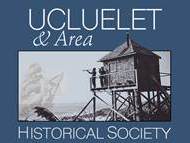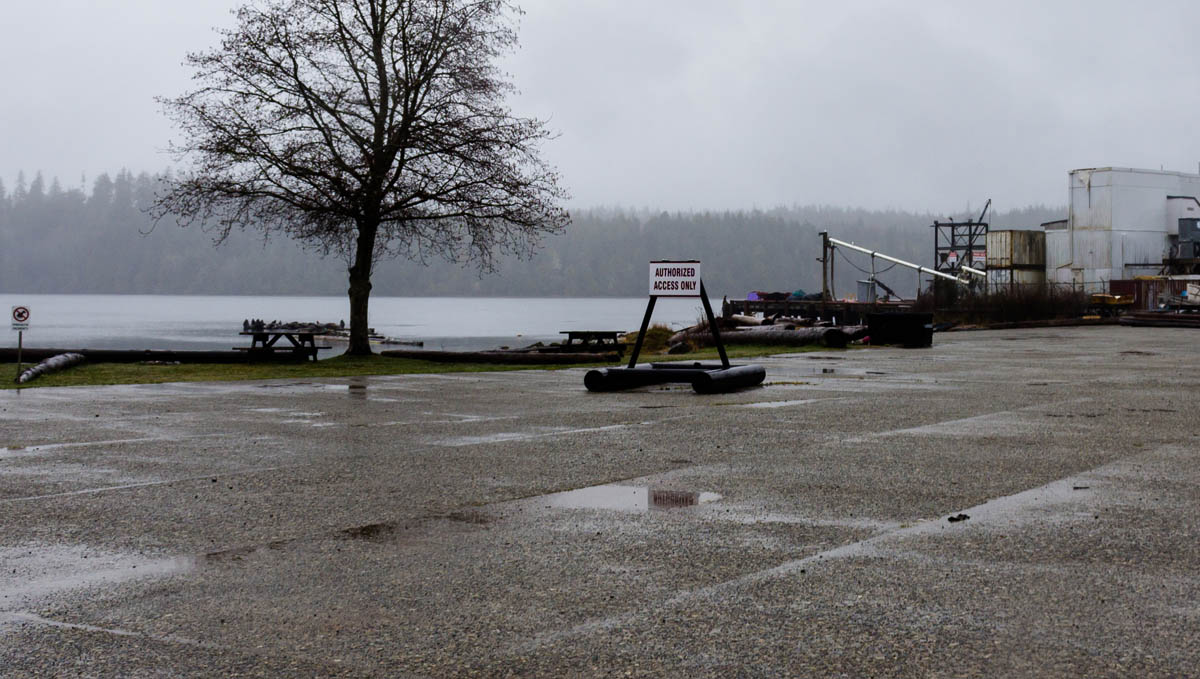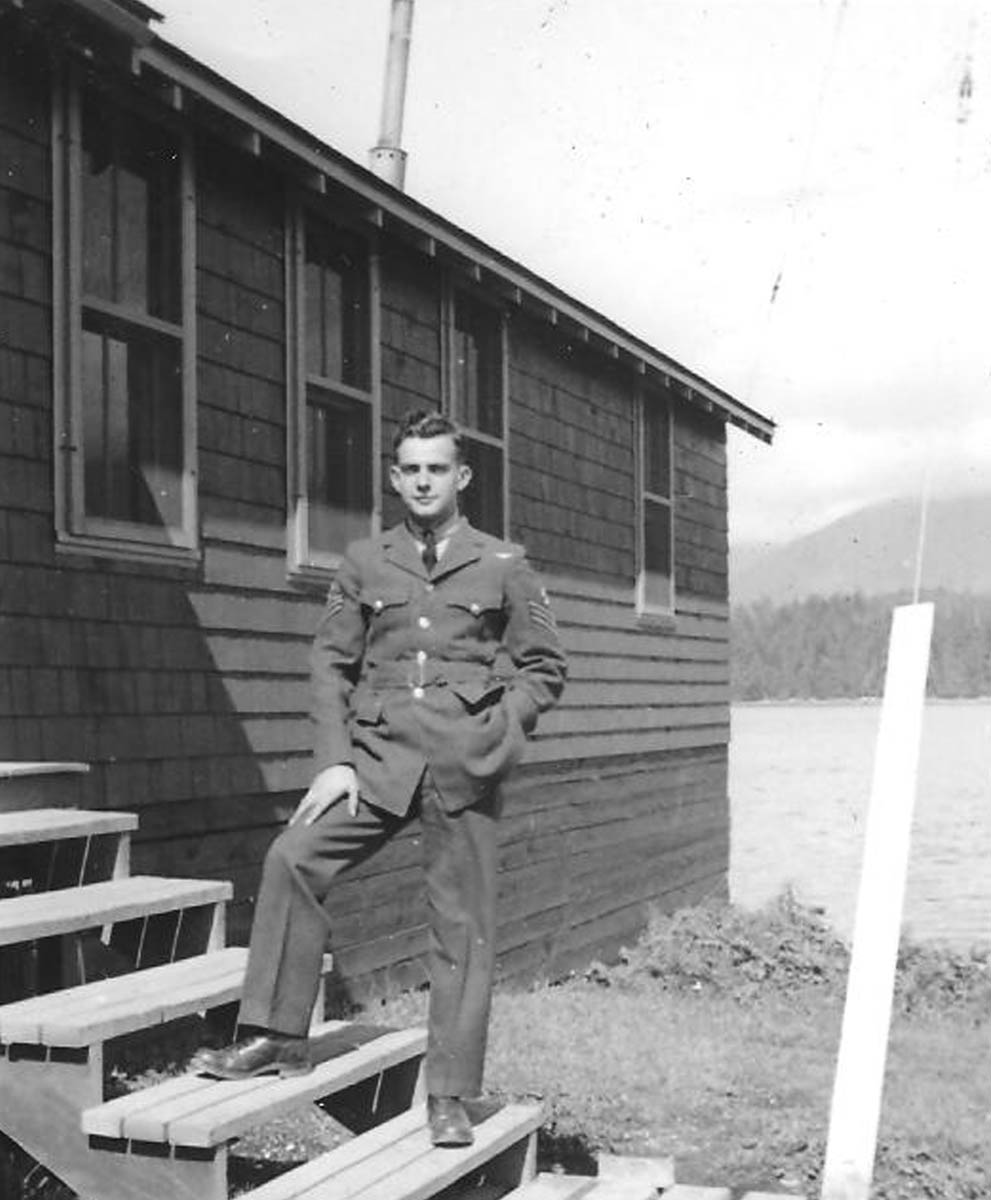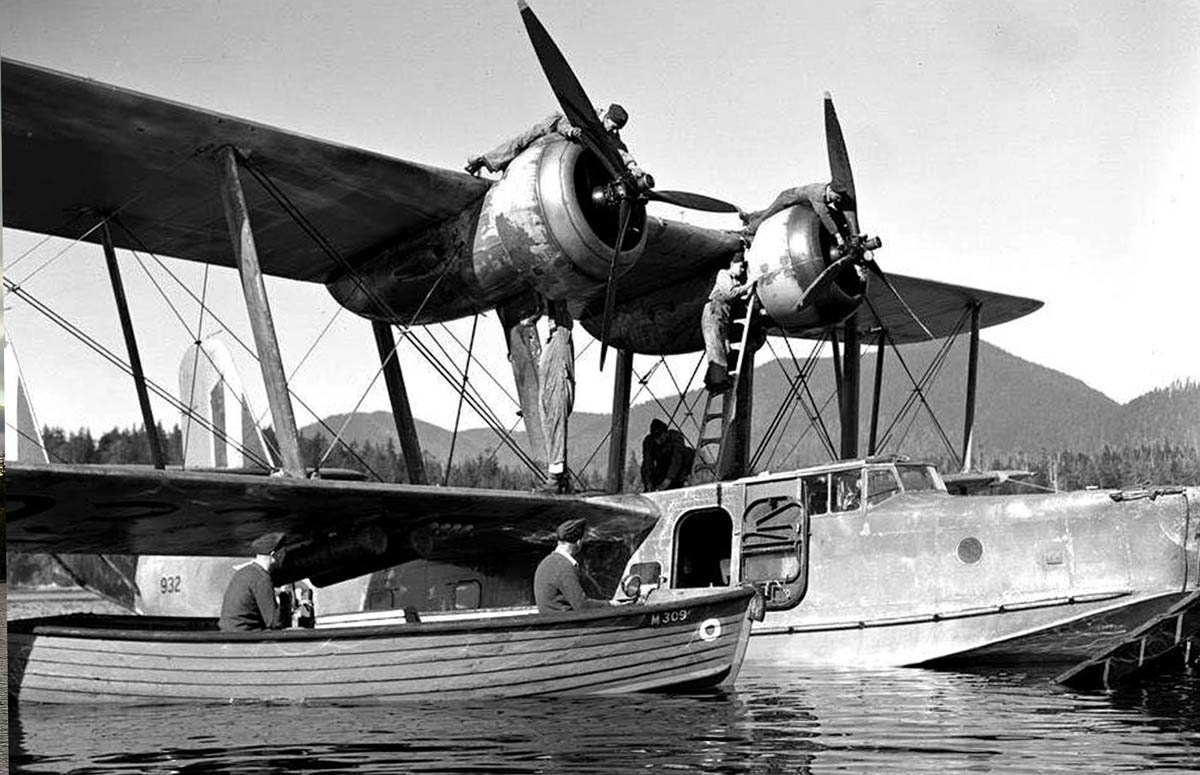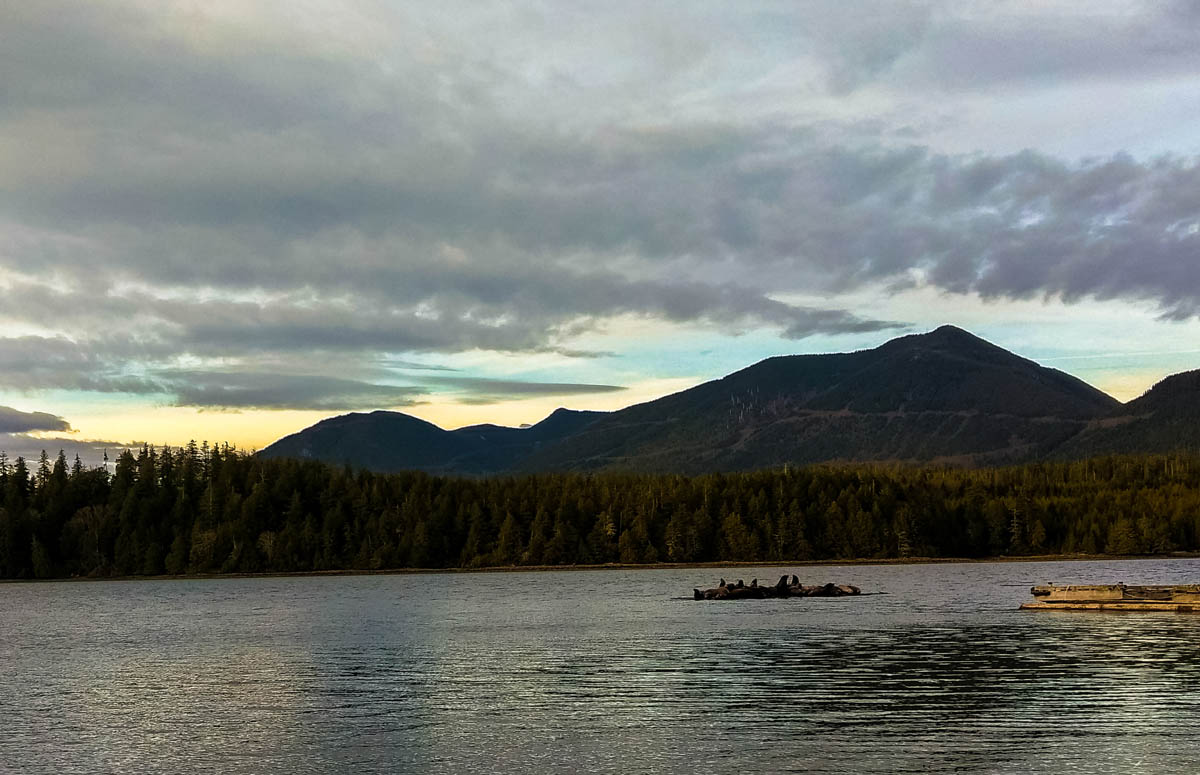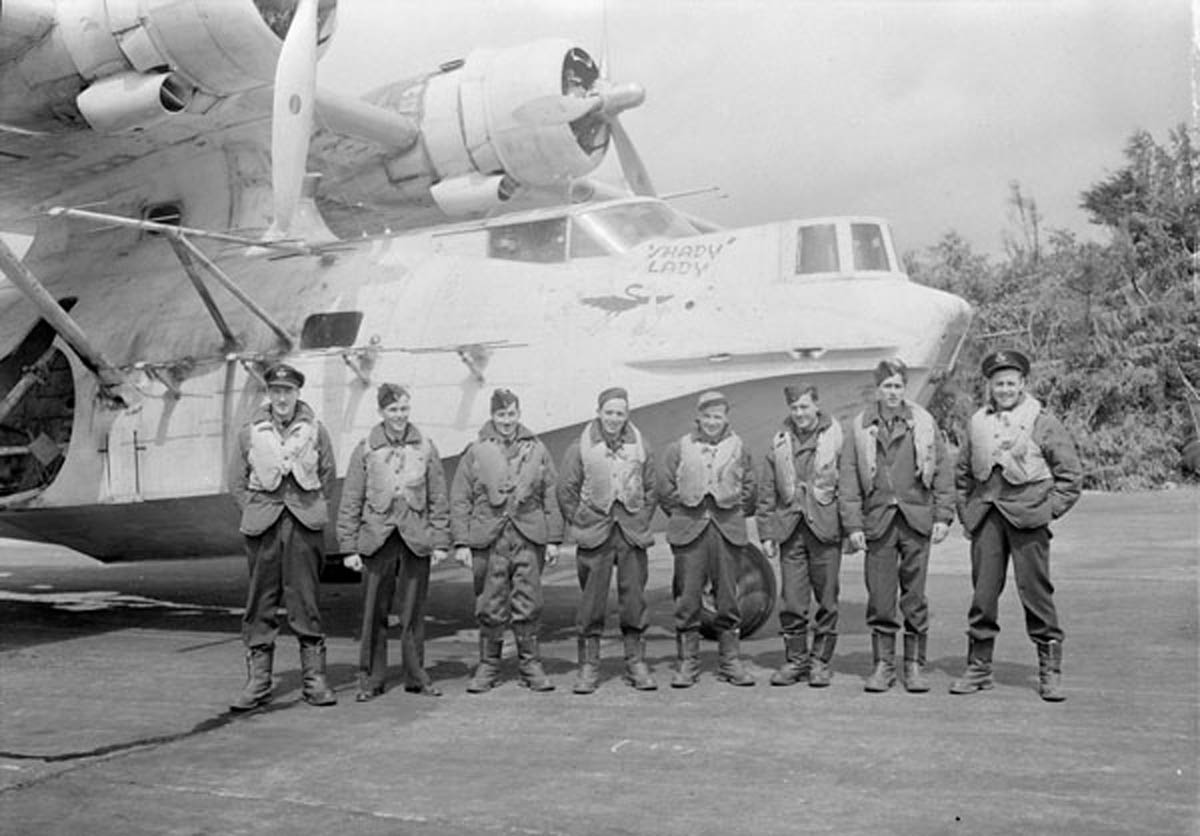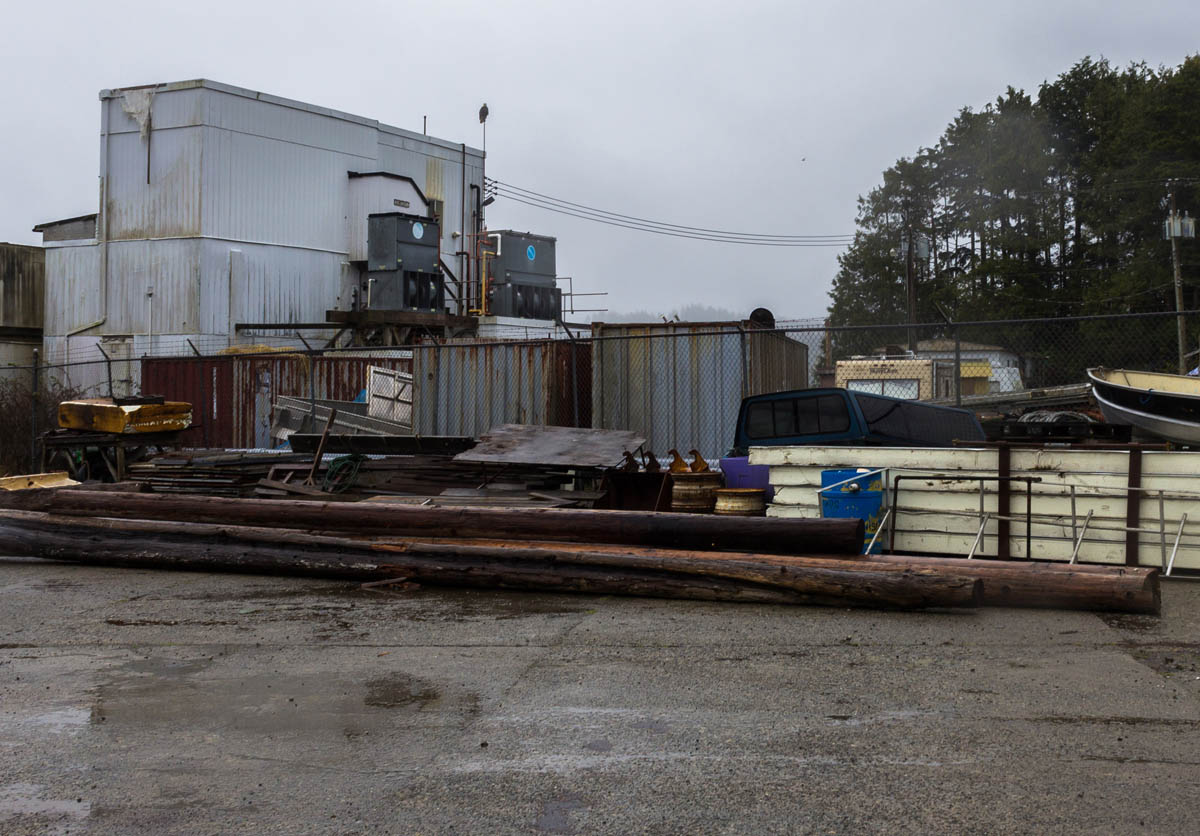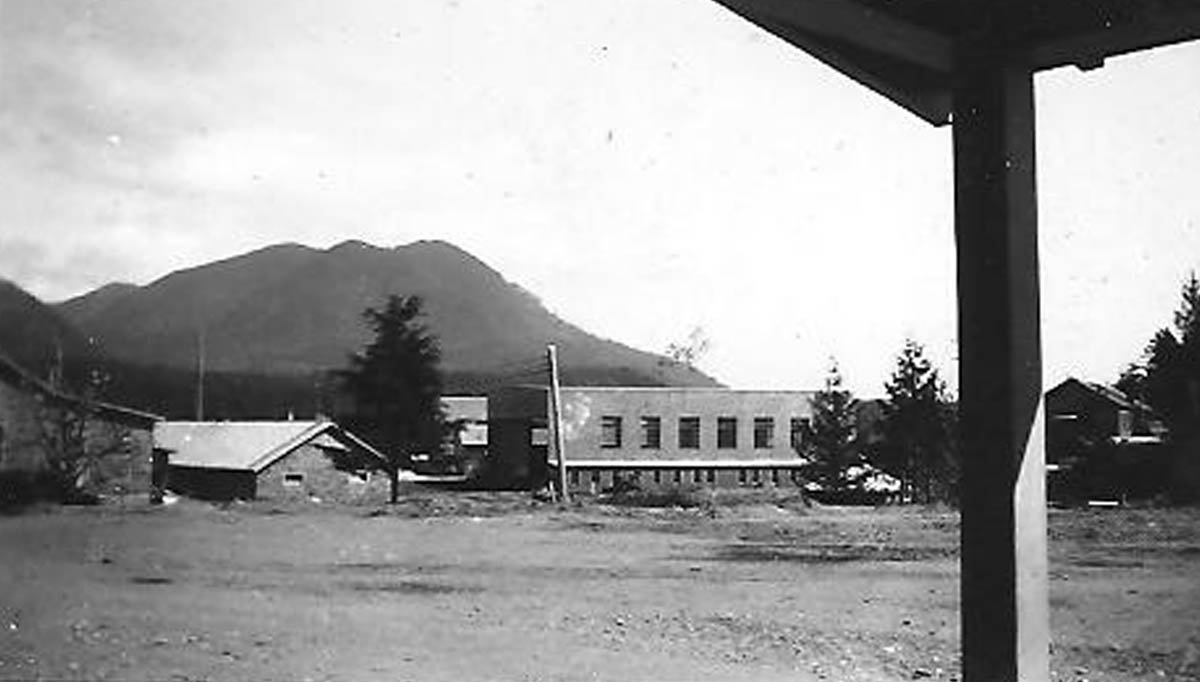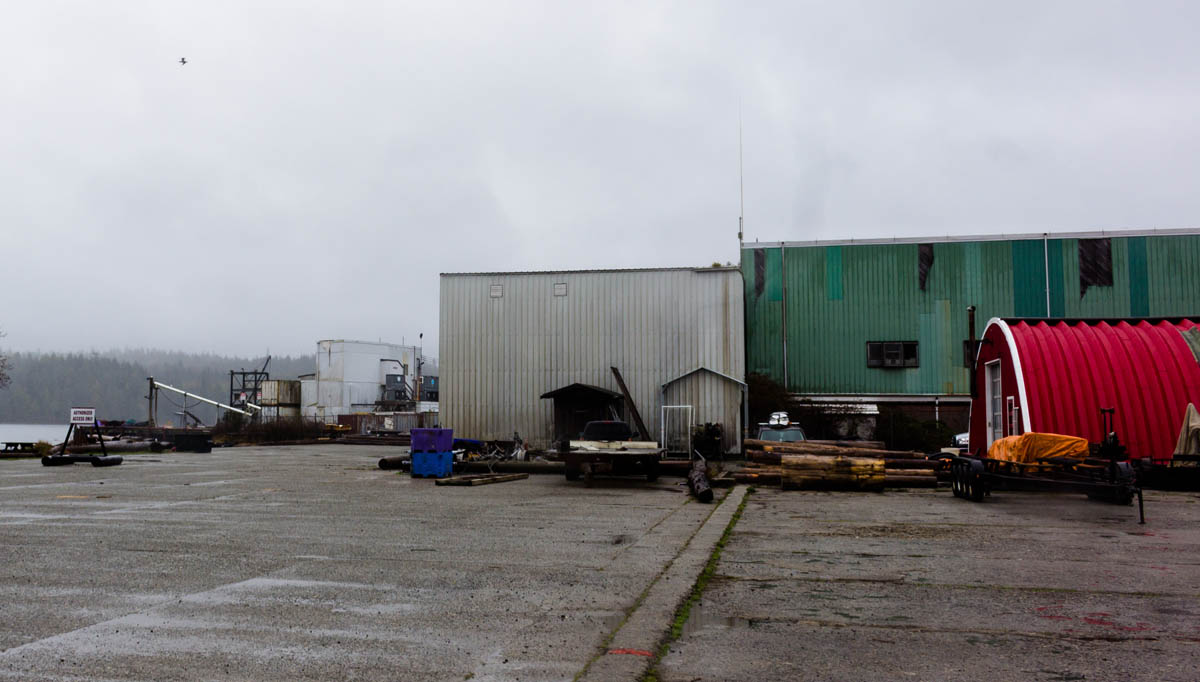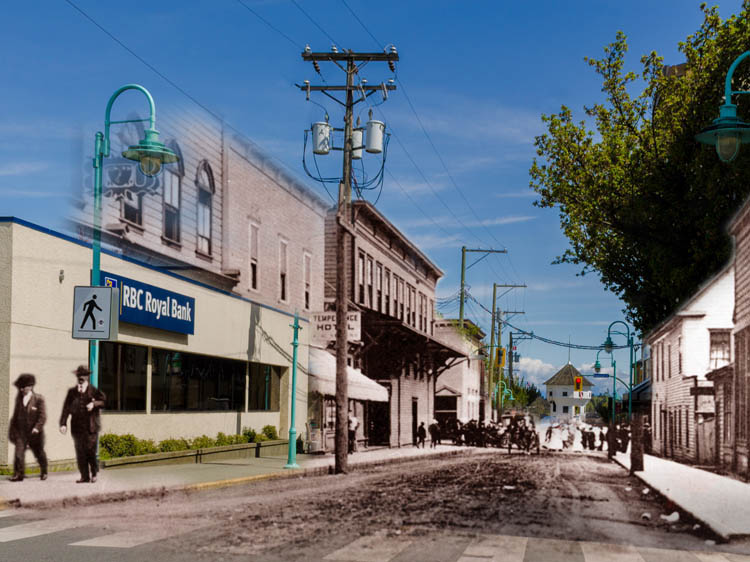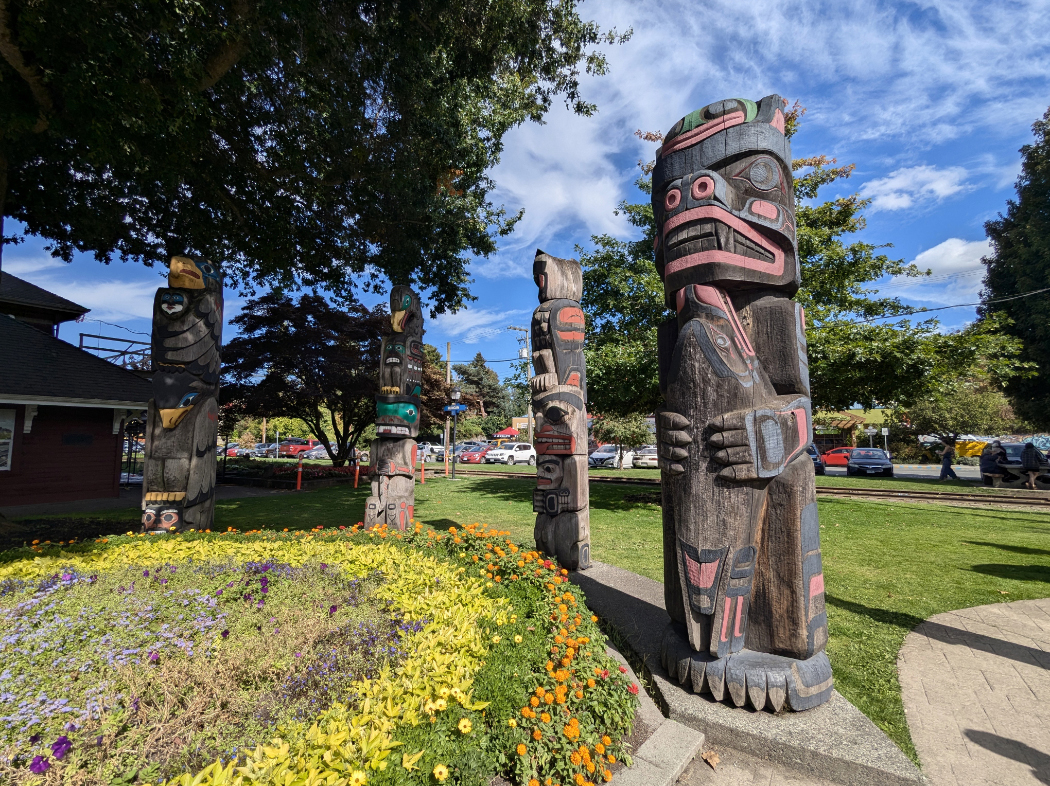Walking Tour
Ucluelet's Seaplane Base
Defending Canada's Coast
By Alexa Dagan

During the Second World War Ucluelet was home to a Royal Canadian Air Force seaplane base. It was one of a network of air bases and radar stations that was British Columbia's first line of defence against Japanese military incursions. Protecting Canada's long, treacherous, and sparsely populated west coast was an immense challenge, and the flexibility of seaplanes, being able to take off and land without air strips, made them ideal tools for this task.
After the war the base was abandoned, and little remains of it today. Much of the former grounds have been reclaimed by the forest. While this area is mostly quiet today, the photos in this tour can help reconjure the hive of activity that was once here.
This project is a partnership with Tourism Ucluelet. We also owe thanks to the generous support of the Ucluelet and Area Historical Society.
1. The Pacific Theatre
Ucluelet & Area Historical Society
1940s
On December 7, 1941, the Empire of Japan launched one of history's most successful surprise attacks on America's naval base at Pearl Harbor, located in Hawaii. This attack made the Second World War a truly world war, expanding the conflict to a new hemisphere--and much closer to BC’s doorstep.
Canadian military planners were shocked by the attack, but it was not entirely unexpected. Japan had already been at war with China for ten years, and the threat of war with the Western Allies had been ramping up since the 1939 beginning of World War II in Europe. British Columbia, with its long and sparsely populated coastline, was almost entirely undefended. If war with Japan was to come, then BC might become part of the conflict zone. In 1940 and early 1941, Canada began ramping up its meager defenses in the region. The biplane Stranraer flying boat you see here was stationed at Ucluelet's air station and part of Canada's first line of defense..
* * *
At Hong Kong, two Canadian battalions from Winnipeg and Quebec City, fought bravely until they were wiped out. Japanese aircraft carrier groups bombed Australia and Ceylon (Sri Lanka) and a few weeks later they captured the Alaskan Islands of Attu and Kiska--targets separated by over 10,000 kilometres. British Columbians watched in horror as Japanese forces ranged across the Pacific with impunity.
Japan's campaign sent shockwaves of fear through the West Coast. Those in coastal communities feared attack, and their anxieties soon manifested themselves as suspicion towards their Japanese-Canadian neighbors. One of them, Johnny Madokoro from Tofino, remembered the tension: "It never entered my head that it would be real trouble for us, because we were all naturalized Canadians. But I guess there was anti-Japanese feelings building up right from the day the first immigrants came. It was building up, building up and bang!"1
Anti-Japanese sentiment and hysteria over homegrown spies culminated in one of Canada's darkest legacies: the internment of thousands of Japanese-Canadians in interior BC. Ucluelet's Japanese community, numbering around 200, was not spared this indignity and they were given only a day to prepare before being forcibly evacuated to British Columbia's interior for the duration of the war. The experience of Ucluelet's Japanese-Canadians is covered in more detail in the People of the Safe Harbour tour.
2. Defending the West Coast
Ucluelet & Area Historical Society
1940s
In this photo, a young man in an impeccably pressed uniform poses on the stairs of one of the buildings at Ucluelet's seaplane base. While this entire area was once thrumming with activity, few hints remain today of its extensive wartime infrastructure.
Japanese attacks on the Alaskan Aleutian Islands, along with some on ships in the Juan de Fuca Strait kept the danger fresh in the mind in the first weeks of 1942. Several kilometers north of Tofino, a Japanese sub came close enough to shore to shell a lighthouse at Estevan Point, though they missed their target. While these attacks were the height of Japanese activity off BC's coast during the war, military planners began to expect the worst, and scrambled to fortify the coast.
* * *
If the Royal Canadian Air Force (RCAF) found the planes disappointing upon their arrival in Ucluelet in July 1940, it was nothing compared to seeing the state of the base. One of the air crew wrote:
"They found nothing complete: the hangars, barrack blocks, storm sewers, wireless masts and workshops all needed a great deal of work. Stumps littered the area, and slash fires spread a haze of smoke over the base. Many personnel camped in tents, and those allocated to the unfinished barracks crammed into every available corner. The water reservoir had dried up that summer, and at high tide it filled with salt water."1
Despite a rocky start, by the time the Japanese were ready to launch their sweeping offensive, the Ucluelet base was fully functioning and manned by around 400 personnel.2
3. Taking Flight
Ucluelet & Area Historical Society 008 31
1940s
In this photo, a team of men perform maintenance on a Stranraer flying boat, a twin engine biplane that could land on land and water. These planes specialized in anti-submarine warfare, marine patrols, and search and rescue. They formed the core of Ucluelet's aircraft complement for much of the war. Western Air Command (WAC), which was responsible for the west coast's defense, were hobbled by limited resources, and kept the out-dated Stranraers on patrol until 1944, even though they'd been retired from service on the east coast over two years before.1
* * *
If the ancient planes and the half-finished base failed to dim the enthusiasm of servicemen stationed in Ucluelet, then the tedium of the assignment was quick to do so. Conducting patrols across the Pacific to search for enemy vessels was their biggest task, and it was rare that these missions spotted much of anything. The most exciting part of patrolling the coast was the temperamental weather and often dreadful conditions, which could very quickly turn excitement into panic.
4. Life on the Base
Ucluelet & Area Historical Society
1940s
In this photo, a handful of young men stand proudly in front of the "Shady Lady," a Consolidated PBY-5A CANSO. These were state-of-the-art American bombers designed for long, high altitude flights and could carry a heavy payload. Upon its arrival in Ucluelet, the "Shady Lady" was legendary for flying one of World War II's longest bombing missions, flying for 16 hours and 35 minutes straight. The mission flew from Australia, to the Indonesian portion of Borneo, and then back to Ucluelet as part of a joint mission between the Royal Australian Air Force and the American 380th Bombardment Group to conduct strategic strikes of oil refineries deep behind enemy lines.
* * *
While the planes themselves sometimes ran into mechanical trouble, the largest foe was the weather. In a single week in 1945, particularly bad weather frustrated those trying to run patrols. The No. 4 Squadron in Tofino attempted 14 patrols, with four cut short, while the No.8 Squadron only completed six of the 12 they attempted.1 While airmen and the ground crew did their best to navigate poor weather and keep obsolete planes in the air, accidents did happen.
On New Year's Eve in 1941, the British Colonist reported that four men died and another four were injured when a flying boat crashed in the forest near Ucluelet. During an interview, Michael Mead-Miller recalls an incident told to him by his parents in which a plane was lost in a massive explosion in the Ucluelet Harbour after a hard water landing detonated the plane's depth charges. Seven of the crew died in the explosion, and witnesses recall the blood-curdling screams of the single survivor, who suffered massive injuries upon being thrown from the plane. However, the most famous crash in the area is the wreck of Canso 11007, which belly-flopped on a slope near Radar Hill after the left engine failed during a routine training flight. Luckily, all 12 of the crewmen survived and were rescued shortly after. These crashes, and others in the area highlight the dangers that the young men of the Ucluelet Airbase faced every time they took to the air.
The wreckage of Canso 11007 remains at the crash site and is now a popular destination for hundreds of hikers every year. While the site can be reached, Parks Canada discourages the practice since there isn't an official route and the swampy area can be confusing for intrepid visitors.
5. Closing the Base
Ucluelet & Area Historical Society 010 192
1940s
The courtyard of Ucluelet's seaplane base looks deserted in this photo, but as the heart of the once extensive base, this courtyard was usually a whirlwind of activity. Now a warehouse, the paved area on which you are standing was only part of the base, which covered most of the land surrounding Seaplane Base Road most of which now belongs to the Ucluelet Campground or has been absorbed by the encroaching woods. After five years and several thousand hours of flight time, the Ucluelet Seaplane Base became inactive on September 1st, 1944, and during those years, not one aircraft or airman based in Ucluelet sunk a single enemy submarine.1
* * *
On the base, the men ate together, slept in barracks, joked, gossiped and complained to each other about their peers and superior offices. In order to keep the mens' skills sharp, and more importantly to keep them occupied, the SO's frequently ran the men through drills, obstacle courses and training exercises, performed thorough inspections of the men's uniforms and hygiene, and assigned what Stofer called "joe-jobs," unnecessary tasks meant to keep the men busy.2 As hard as the men worked, they played even harder.
During periods of leave, servicemen sometimes attended dances in town and attempted to woo local girls. Stofer reports one particularly rowdy New Years Eve in the base canteen, "Jammed with such roisterers, who rollicked about, or sat at cluttered beer-slopped tables, the crowded canteen became bedlam. In air heavy with the stench of tobacco, our voices competing with the blaring juke-box, we drank, reminisced, bitched, argued, praised one another, laughed, punched shoulders, slapped backs, and shook hands in lively good-fellowship. Finally, in drunken unison, slightly out of tune, armed entwined all round, all sang, 'Auld Lang Syne." Buddies forever."3
After the base became inactive, and the war ended, the brave boisterous young men departed for home and the town quieted. While some returned to homes across the country and to families, wives, and girlfriends, some returned to Ucluelet to marry the girls they had met during their time at the base. Now, in the Ucluelet Campground, two large bunkers remain as a testament to this perilous time when Vancouver Island's west coast was the last frontier of the Pacific home front.
Endnotes
1. The Pacific Theatre
1. Margaret Horsfield and Ian Kennedy, Tofino and Clayoquot Sound: A History (Madeira Park: Harbour Publishing, 2014), 386.
2. Defending the West Coast
1. Horsfield and Kennedy, 380.
2. Horsfield and Kennedy, 380.
3. Taking Flight
1. Hugh A. Halliday, "Western Air Command: Air Force, Part 30, Legion Magazine, Dec. 19 2018, Online. https://legionmagazine.com/en/2008/12/western-air-command/
2. Halliday.
4. Life on the Base
1. Hugh A. Halliday, "Winding Down Western Air Command: Air Force, Part 32," Legion Magazine, April 25, 2009. Online.
5. Closing the Base
1. Horsfield and Kennedy, 404.
2. Eric Stofer, R.C.A.F Station Ucluelet B.C. (Recollections) (Victoria, BC: Self-Published by Eric Stofer, 1995), 119.
3. Eric Stofer, 183 - 184.
Bibliography
Halliday, Hugh A. "Western Air Command: Air Force, Part 30, Legion Magazine, Dec. 19 2018. https://legionmagazine.com/en/2008/12/western-air-command/
Halliday, Hugh A. "Winding Down Western Air Command: Air Force, Part 32," Legion Magazine, April 25, 2009. https://legionmagazine.com/en/2009/04/winding-down-western-air-command-air-force-part-32/
Horsfield, Margaret and Kennedy, Ian. Tofino and Clayoquot Sound: A History. Madeira Park: Harbour Publishing, 2014.
Stofer, Eric. R.C.A.F Station Ucluelet B.C. (Recollections). Victoria, BC: Self-Published by Eric Stofer, 1995.




